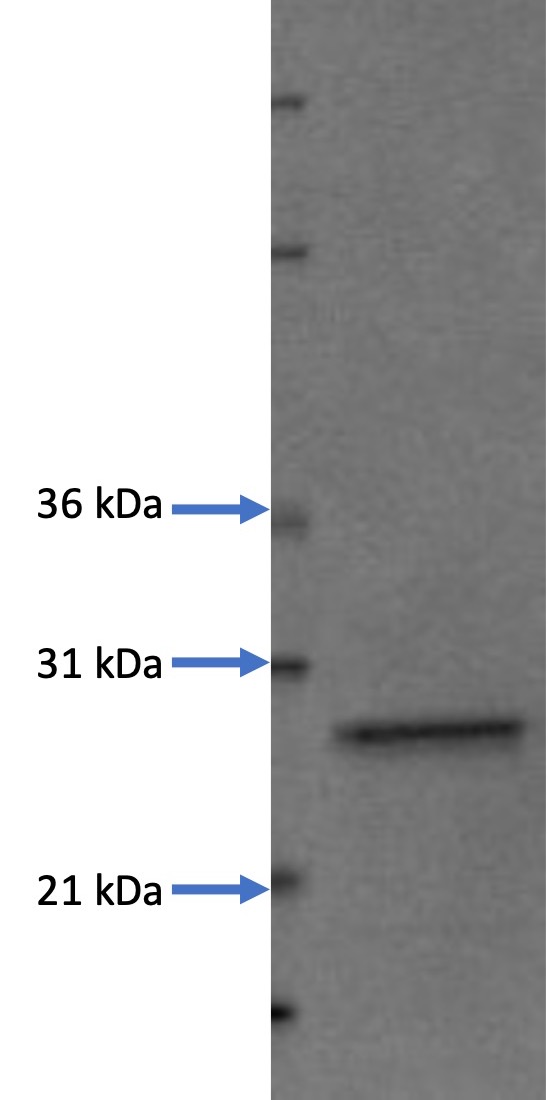Recombinant Human NGAL/Lipocalin-2/LCN2 (C-6His, Human Cells)
Shipping Info:
For estimated delivery dates, please contact us at [email protected]
| Amount : | 10 µg |
| Content : | Supplied as a 0.2 µm filtered solution of PBS, 50% glycerol,pH7.4. |
| AA sequence : | Recombinant Human NGAL is produced by our Mammalian expression system and the target gene encoding Gln21-Gly198 is expressed with a 6His tag at the C-terminus. |
| Alternative Name : | Neutrophil gelatinase-associated lipocalin; NGAL; 25 kDa alpha-2-microglobulin-relatedsubunit of MMP-9; Lipocalin-2; Oncogene 24p3; Siderocalin LCN2;p25;HNL;NGAL |
Source : Human Cells;
LCN2 is iron-trafficking protein involved in multiple processes such as apoptosis, innate immunity and renal development. LCN2 binds iron through association with 2,5-dihydroxybenzoic acid (2,5-DHBA), a siderophore that shares structural similarities with bacterial enterobactin, and delivers or removes iron from the cell, depending on the context. LCN2 is involved in apoptosis due to interleukin-3 (IL3) deprivation: iron-loaded form increases intracellular iron concentration without promoting apoptosis, while iron-free form decreases intracellular iron levels, inducing expression of the proapoptotic protein BCL2L11/BIM, resulting in apoptosis. LCN2 is involved in innate immunity, possibly by sequestrating iron, leading to limit bacterial growth.
LCN2 is iron-trafficking protein involved in multiple processes such as apoptosis, innate immunity and renal development. LCN2 binds iron through association with 2,5-dihydroxybenzoic acid (2,5-DHBA), a siderophore that shares structural similarities with bacterial enterobactin, and delivers or removes iron from the cell, depending on the context. LCN2 is involved in apoptosis due to interleukin-3 (IL3) deprivation: iron-loaded form increases intracellular iron concentration without promoting apoptosis, while iron-free form decreases intracellular iron levels, inducing expression of the proapoptotic protein BCL2L11/BIM, resulting in apoptosis. LCN2 is involved in innate immunity, possibly by sequestrating iron, leading to limit bacterial growth.
|
There are currently no product reviews
|


















.png)










